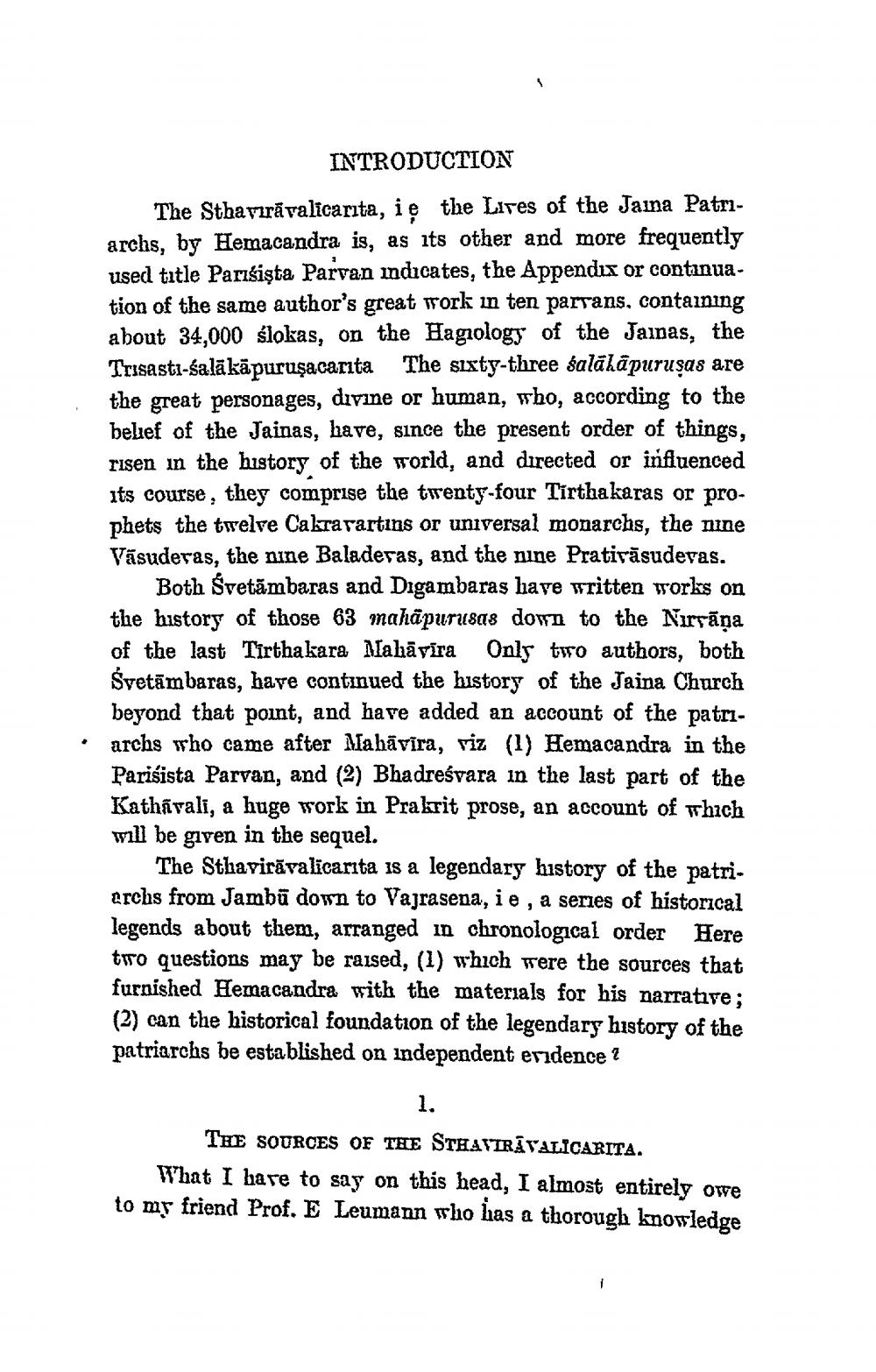________________
.
INTRODUCTION
The Sthaviravalicarita, ie the Lives of the Jaina Patriarchs, by Hemacandra is, as its other and more frequently used title Parisista Parvan indicates, the Appendix or continuation of the same author's great work in ten parvans, containing about 34,000 slokas, on the Hagiology of the Jainas, the Trisasti-salakāpuruşacarita The sixty-three salāhāpuruṣas are the great personages, divine or human, who, according to the belief of the Jainas, have, since the present order of things, risen in the history of the world, and directed or influenced its course, they comprise the twenty-four Tirthakaras or prophets the twelve Cakravartins or universal monarchs, the nine Vasudevas, the nine Baladevas, and the nine Prativasudevas.
Both Svetambaras and Digambaras have written works on the history of those 63 mahāpurusas down to the Nirvaṇa of the last Tirthakara Mahavira Only two authors, both Śvetāmbaras, have continued the history of the Jaina Church beyond that point, and have added an account of the patriarchs who came after Mahavira, viz (1) Hemacandra in the Parisista Parvan, and (2) Bhadresvara in the last part of the Kathavali, a huge work in Prakrit prose, an account of which will be given in the sequel.
The Sthaviravalicarita is a legendary history of the patriarchs from Jambu down to Vajrasena, i e, a series of historical legends about them, arranged in chronological order Here two questions may be raised, (1) which were the sources that furnished Hemacandra with the materials for his narrative; (2) can the historical foundation of the legendary history of the patriarchs be established on independent evidence ?
1.
THE SOURCES OF THE STHAVIRĀVALICARITA.
What I have to say on this head, I almost entirely owe to my friend Prof. E Leumann who has a thorough knowledge
1




